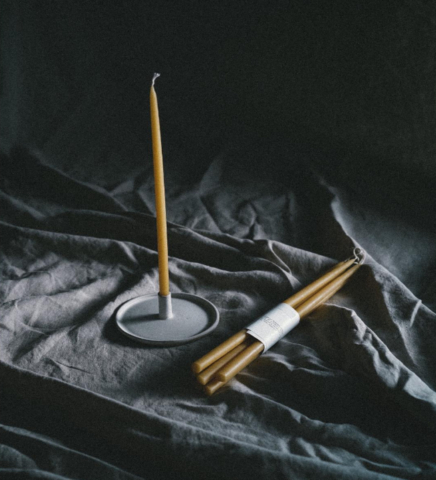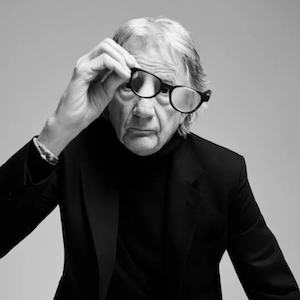Smells Like Disco
By Baishali Banerjee
When dance floors shut down, they moved the party to their own living rooms and their bedrooms. There was always one irreplaceable element; candlelight. Their at-home dance floor was created from the feeling of a perfect song amidst a flickering glow and mesmerizing fragrance. And so was Discothèque born. Jessie Willner and Hanover Booth best friends turned business partners (the mighty company) who share the same joie de vivre that they portray in their clothes collections and who are united by their shared lifelong desire to spread joy through their artistic pursuits. This now includes their most recent venture into home fragrances. Discothèque fragrance spawned from their passion for the dance floor missed so deeply during lockdown and all the magical moments that can only be inspired by the beat of the music in a dimly lit space; imagined scents of dance floors log ago empty. Also very much an ode to the greatest clubs around the world that spawned the greatest night for those in the know. To know more, read Smells Like Disco here.
You didn’t queue, because the cool kids just walked up to the door and were let in. If you queued to get into the Wag club in the early to mid-1980s in London you were definitely not going to be let in.
Starting in 1982, the Wag Club was the destination for cutting-edge kids and superstars, originally in a jazz venue that was called the whiskey-a-g0-g0; the 1980s club came alive in the midst of the city’s underground creative scene. London was at this point a melting pot of local and international talent many on the verge fame or infamy many to go on to be icons within the creative industries
Many were art fashion and music students who meet with an open-minded creative way of thinking that was expressed in the way they dressed. Different from the very fashionably make-up style of predecessors like The Blitz club, The Wag was about sharp dressing and intelligent creative thinking.
The Wag was synonymous with what was happening on the street where things like DM’s old skool trainers were being worn with the likes of new styles of designers like Jean Paul Gaultier and some Japanese creators like Issey Miyake and Yoji Yamamoto. A massive seachange was afoot. The catwalk kings of the 1970s and 1980s were of no interest.
These clubbers went on to create their own fashions from streetwear up, and also listened to hip hop house and acid house before anyone else.
Cool kids didn’t go to the local Disco but went to clubs, with the Wag being the most important and hardest to get into. Designers such as John Galliano paraded their designs there, Leigh Bowery strutted his magnificent stuff future, Turner prize winners Tracey Emin and Grayson Perry were regulars. Boy George, Joe Strummer, and Neneh Cherry came every week for a little dance whilst Jean Paul Gaultier came all the way from Paris for inspiration on the growing effect of youth culture from these small set of people and its catalyst on catwalk fashion.
However, it is important to understand this was no glitzy glamourous nightclub but a dark dingy two-floor shack-like building across the road from Chinatown (where many would go eat at 4 am after a night clubbing ) yet many famous faces graced the doors and there was no such thing as a VIP area. In many ways, it was an egalitarian style club (as long as you were cool enough to get in) where everyone just got on and danced; gay, straight, by, rich, poor, famous, and unknowns danced the night away to rare dance music from America. The Wag was seen by many as the greatest club in the world.
The discos and then clubs of the ’70s and early ’80s were, after all, more than just dance floors. They were about attitude, and location where outcasts and elitists, celebrities and recluses, could all converge for the sake of music.
For many, the dance floor served as the great equalizer, and it was inclusive exclusivity. Genres and eras could be created by a single underground club. While the DJ played their hymn, it was a place where a generation might be formed.
Discothèque candles are made to bring back memories of those legendary parties, cult-favorite clubs, and unforgettable nights. The aroma reflects the mood. Each candle is intended to inspire dance floor’s bliss, unadulterated ecstasy, in hues as rich and brilliant as the disco that served as inspiration.





Their glass containers can almost be seen as the neon sign above the door if the sensation is in the smell and the disco is in the wax, a brilliant ombré of colours is the facade.
Handcrafted three-colour gradient glass, a Discothèque trademark. No two Discothèque glasses are alike since each colour is hand-sprayed and then heated to fix it before the next pigment is added, giving the impression of layers, a unique collectible intended to remain in your house long after your candle has burned.
From the wick to the melt to the finish, every step of the process is meticulously planned. Small quantities of the candles are made and hand-poured in a United Kingdom atelier.

Discothèque’s bouncer is quality control. You won’t be allowed in if you’re a low-grade wax or a petroleum byproduct. A natural mixture of soy and rapeseed oils, the vegan wax used to make the candles is entirely traceable, sustainable, and of the highest quality. It is designed to melt evenly and burn slowly.

For two weeks only the company has a pop-up launch in Air Street Soho London from 14th December, whilst all products are available online on their website discothequefragrances.com/
An ode to discos moments whether they be from lockdown discos to the greatest club ever a set of candles to dance at least round your own handbag in your living room, scented to bring the music alive.
If you enjoyed reading Smells Like Disco then why not read Christmas Dreams 12 Here
.Cent Magazine, Be Inspired; Get Involved.





